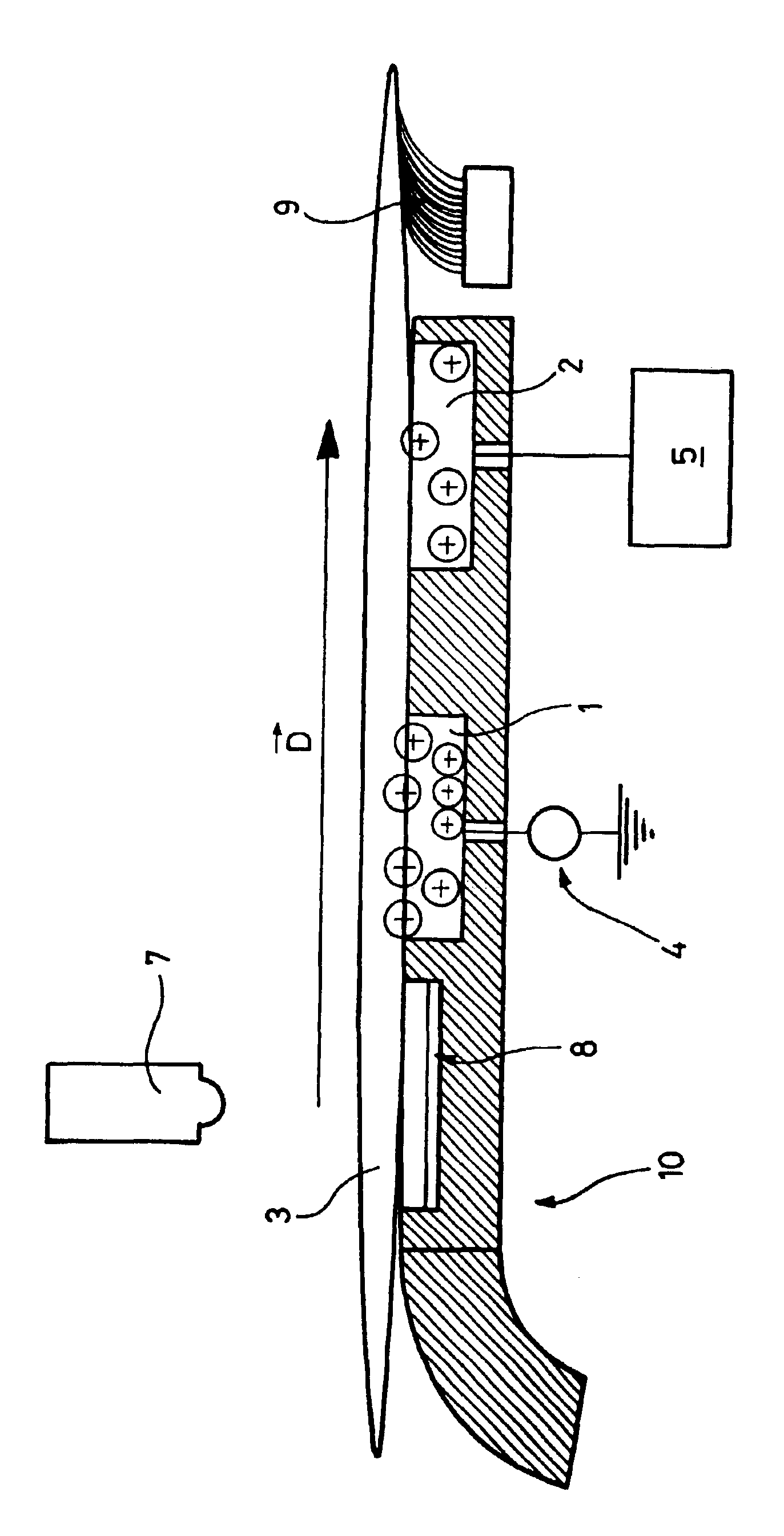Method of detecting plastics articles, and a detector device
a detector device and plastics technology, applied in the field of plastics articles detection, can solve the problems of ineffective technique, inability to cover plastics articles, and insufficient drying speed of printing ink on plastic materials, and achieve the effect of convenient mounting
- Summary
- Abstract
- Description
- Claims
- Application Information
AI Technical Summary
Benefits of technology
Problems solved by technology
Method used
Image
Examples
Embodiment Construction
[0013]The method of the invention is intended in particular for a postal sorting installation in which it is desired to detect or discriminate automatically between articles having an outside surface made of a plastics material and articles having an outside surface made of paper. In the invention, each article is moved past a static electricity generator in order to be charged electrostatically, and then past a member for evaluating electrostatic charge in order to compare its electrostatic charge with a reference value so as to determine whether the article is covered in plastics material or in paper. It has been found that the plastics materials used for wrapping, such as cellophane, polyester, tyvex, etc. have greater intrinsic ability to become electrostatically charged and to conserve their charge than paper or card. This quality presents the advantage of being independent of the type of plastics material used and of the packaging technique used (thermoforming, heat-shrinking,...
PUM
| Property | Measurement | Unit |
|---|---|---|
| DC voltage | aaaaa | aaaaa |
| electrostatic charge | aaaaa | aaaaa |
| conductive | aaaaa | aaaaa |
Abstract
Description
Claims
Application Information
 Login to View More
Login to View More - R&D
- Intellectual Property
- Life Sciences
- Materials
- Tech Scout
- Unparalleled Data Quality
- Higher Quality Content
- 60% Fewer Hallucinations
Browse by: Latest US Patents, China's latest patents, Technical Efficacy Thesaurus, Application Domain, Technology Topic, Popular Technical Reports.
© 2025 PatSnap. All rights reserved.Legal|Privacy policy|Modern Slavery Act Transparency Statement|Sitemap|About US| Contact US: help@patsnap.com


